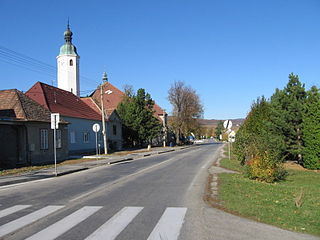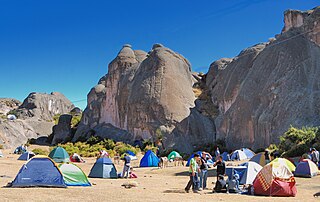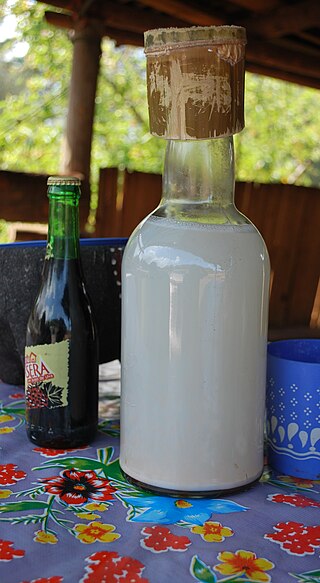
Laetitia Marie Laure Casta is a French model and actress.

Mestizo is a person of mixed European and indigenous non-European ancestry in the Spanish Empire. In certain regions such as Latin America, it may also refer to people who are culturally European even though their ancestors are indigenous. The term was used as an ethno-racial exonym for mixed-race castas that evolved during the Spanish Empire. It was a formal label for individuals in official documents, such as censuses, parish registers, Inquisition trials, and others. Priests and royal officials might have classified persons as mestizos, but individuals also used the term in self-identification.

Cholo is a loosely defined Spanish term that has had various meanings. Its origin is a somewhat derogatory term for people of mixed-blood heritage in the Spanish Empire in Latin America and its successor states as part of castas, the informal ranking of society by heritage. Cholo no longer necessarily refers only to ethnic heritage, and is not always meant negatively. Cholo can signify anything from its original sense as a person with one indigenous parent and one Mestizo parent, "gangster" in Mexico, an insult in some South American countries, or a "person who dresses in the manner of a certain subculture" in the United States as part of the cholo subculture.

Casta is a term which means "lineage" in Spanish and Portuguese and has historically been used as a racial and social identifier. In the context of the Spanish Empire in the Americas, the term also refers to a now-discredited 20th-century theoretical framework which postulated that colonial society operated under a hierarchical race-based "caste system". From the outset, colonial Spanish America resulted in widespread intermarriage: unions of Spaniards, Amerindians, and Africans. Basic mixed-race categories that appeared in official colonial documentation were mestizo, generally offspring of a Spaniard and an Indigenous person; and mulatto, offspring of a Spaniard and an African. A plethora of terms were used for people with mixed Spanish, Amerindian, and African ancestry in 18th-century casta paintings, but they are not known to have been widely used officially or unofficially in the Spanish Empire.

Torna atrás or tornatrás is a term once used in 18th century Casta paintings to portray a mestizo or mixed-race person who showed phenotypic characteristics of only one of the "original races", such as European or Amerindian ancestry. The term was also used to describe an individual whose parentage was half white and half "albino".

Portuguese wine was mostly introduced by the Romans and other ancient Mediterranean peoples who traded with local coastal populations, mainly in the South. In pre-Roman Gallaecia-Lusitania times, the native peoples only drank beer and were unfamiliar with wine production. Portugal started to export its wines to Rome during the Roman Empire. Modern exports developed with trade to England after the Methuen Treaty in 1703. From this commerce a wide variety of wines started to be grown in Portugal. In 1758, one of the first wine-producing regions of the world, the Região Demarcada do Douro was created under the orientation of Marquis of Pombal, in the Douro Valley. Portugal has two wine-producing regions protected by UNESCO as World Heritage: the Douro Valley Wine Region and Pico Island Wine Region. Portugal has a big variety of local kinds, producing a very wide variety of different wines with distinctive personality.

Castizo is a racial category used in 18th-century Colonial Mexico to refer to people who were three-quarters Spanish by descent and one-quarter Amerindian. The feminine form of the word is castiza. In the early 21st century, the term castizo has also come to mean mixed-race people with light skin, in comparison to mulattos, pardos, and coyotes, who would be mixed-race people with darker skin.

The Diocese of Ajaccio is a Latin Church ecclesiastical jurisdiction or diocese of the Catholic Church in France. The diocese comprises the whole of the island of Corsica.

Častá is a village and municipality in western Slovakia in Pezinok District in the Bratislava Region, on the foothills of the Little Carpathians. The village is best known for the Červený Kameň Castle, which is above the village.
La Casta Susana is a 1944 Argentine film released on October 11 of that year. It is based on the operetta Die keusche Susanne.

The Aure et Saint-Girons or Casta is an endangered French breed of domestic cattle. The breed name derives from its two principal areas of origin, the Vallée d'Aure in the département of the Hautes-Pyrénées, and the area of Saint-Girons and the Couserans in the Ariège. The name "Casta" derives from its chestnut colour.

Psyche casta is a nocturnal moth from the family Psychidae, the bagworm moths. The wingspan of the males ranges from 12 to 15 millimeters. They have hairy, brown-metallic shiny wings. The grub-like females have legs but do not have wings and are yellowish or light brown, except for some dark brown back plates.

San Pedro de Casta District is one of thirty-two districts of the province Huarochirí in Peru. The town of San Pedro de Casta is known for its proximity to Marcahuasi, and receives the majority of its attention from this tourist attraction. Nevertheless, over the 20th century the town has attracted significant academic interest, largely due to its traditional annual week-long canal-cleaning ritual carried out every October. More recent research has focused on historical aspects of this ritual; Casta is home to the early twentieth-century Entablo Manuscript, which describes Casta's ritual water laws in predominantly Spanish language from a local point of view. Scholars have drawn comparisons between the 'Entablo' and the Quechua language early colonial Huarochirí Manuscript from the same Peruvian province.

Pulque, occasionally known as octli or agave wine, is an alcoholic beverage made from the fermented sap of the maguey (agave) plant. It is traditional in central Mexico, where it has been produced for millennia. It has the color of milk, a rather viscous consistency and a sour yeast-like taste.

The Divine Spark is a 1935 British musical film directed by Carmine Gallone and starring Marta Eggerth, Phillips Holmes, Benita Hume and Donald Calthrop. An Italian-language version Casta Diva was shot simultaneously. Both films were made at the Tirrenia Studios in Italy.

Casta Diva is a 1935 Italian musical drama film directed by Carmine Gallone and starring Mártha Eggerth, Lamberto Picasso and Gualtiero Tumiati. The film won Best Italian Film at the 1935 Venice International Film Festival. An English-language version The Divine Spark was made at the same time, also directed by Gallone and starring Eggerth. Gallone remade the film in 1954 in Technicolor.
Luisa Sanfelice is a 2004 Italian historical film directed by Paolo and Vittorio Taviani. It stars Laetitia Casta and was co-produced between Italy and France. It is an adaptation of a book by Alexandre Dumas.

Pterolophia is a genus of longhorn beetles of the subfamily Lamiinae, containing the following species:

Casta Diva is a 1954 Italian-French biographical melodrama film directed by Carmine Gallone. It is a remake of Gallone's 1935 film with the same name.
















